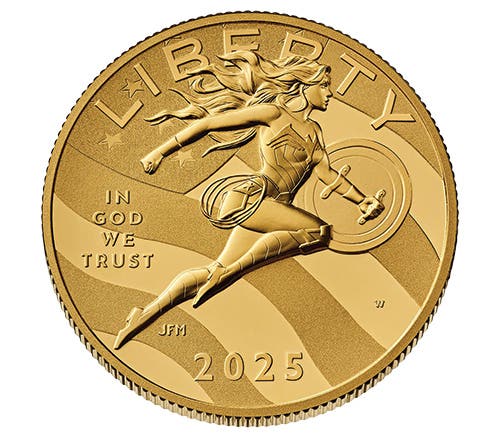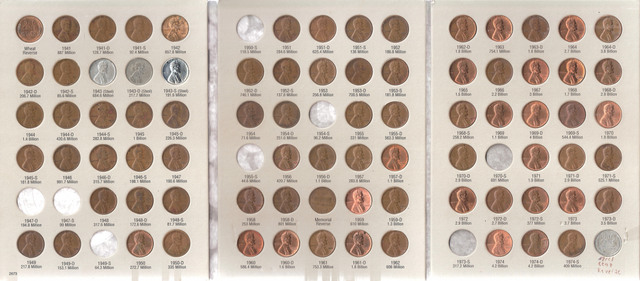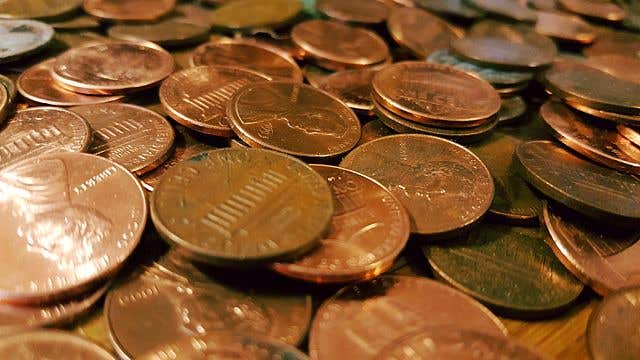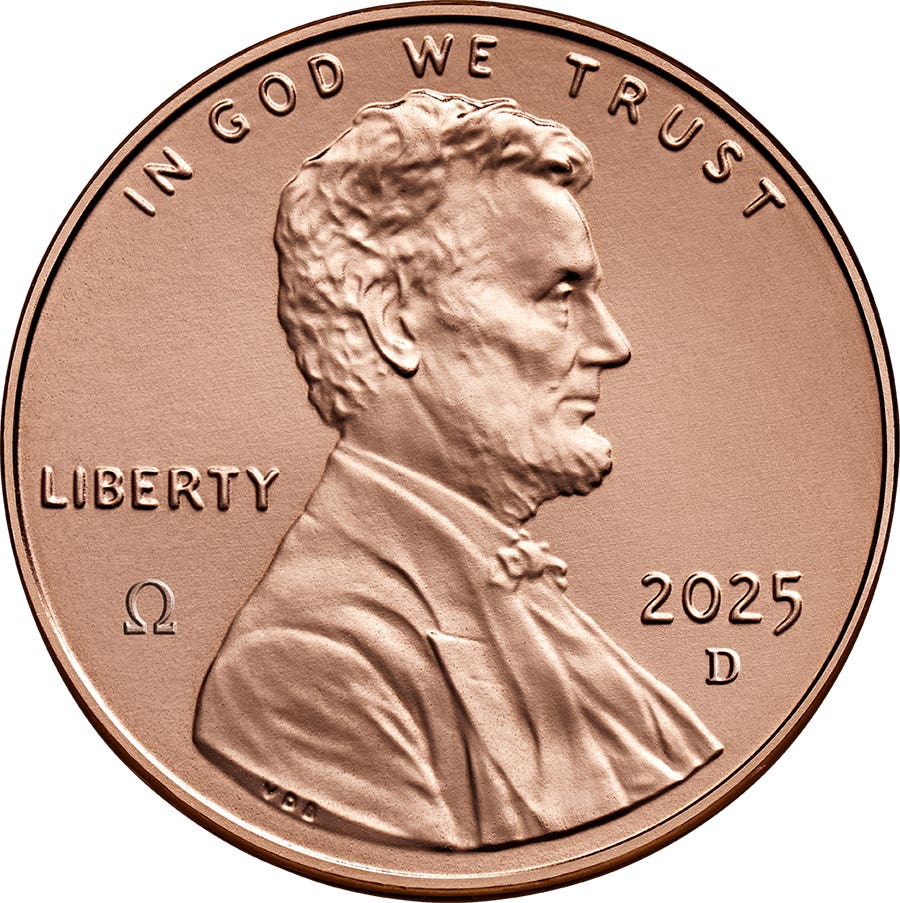Could Gold Save The U.S. Dollar?
According to Heller, the existing federal government debt and the present values of unfunded liabilities for Social Security, Medicare, and related programs, which collectively exceed $100 trillion, are so massive that no politicians can prevent the eventual collapse of the U.S. dollar.
Government budget deficits matter. Constant deficits are covered in one of three ways—higher taxes, greater borrowing, or a fall in the currency's purchasing power (or all three at once!).
With more borrowing and a falling dollar, the government is destined to pay higher interest costs to finance its deficits. For the fiscal year of September 30, 2024, the U.S. government paid $882 billion in interest. For the current fiscal year, the projection is interest costs will total $1.2 trillion.
Every time in history, when a government’s interest cost on its debt exceeded military expenditures, that government collapsed. The current fiscal year budget for the Defense Department is less than $900 billion, far below interest payments.
Also, whenever government budget deficits exceeded 6% of Gross Domestic Product (GDP), that government’s international stature declined. That happened in the Roman Empire, the Netherlands 400 years ago, Spain over 200 years ago, the United Kingdom after World War I, and the Soviet Union in the 1980s.
The U.S. government budget deficit for the fiscal year of September 30, 2024, ran close to 7%!
Last year, a U.S. Treasury report stated that unless federal government spending was significantly reduced, American prosperity and economic stability were in jeopardy. Similar warnings were issued this year by the Bank for International Settlements and the International Monetary Fund.
Is it possible that the incoming president and a Congress with a Republican majority in both chambers of Congress might be able to accomplish a huge reduction in government spending?
In my opinion, the existing federal government debt and the present values of unfunded liabilities for Social Security, Medicare, and related programs, which collectively exceed $100 trillion, are so massive that no politicians will be able to prevent the eventual collapse of the U.S. dollar.
Economist Judy Shelton proposes an intriguing idea in her book Good As Gold and in her recent interviews to prop up the U.S. dollar by having the U.S. Treasury issue a 50-year debt backed by gold as collateral.
Could this work? Could gold save the U.S. Dollar?
As much as I might wish that were possible, I expect it would only delay the dollar’s collapse. Shelton’s proposal has multiple weaknesses.
· The U.S. government has a track record of repudiating gold as collateral for its fiscal issues (remember 1933?).
· A lot can happen in a 50-year time frame. On August 15, 1971, when U.S. President Nixon closed the gold exchange window to central banks, the fixed exchange rate for an ounce of gold was $43.15. Stated another way, $1 U.S. was equal to 0.023175 of an ounce of gold. Fifty-three years later, on December 17, 2024, COMEX closed at $2,636.50; that same $1 U.S. is only worth 0.0003793 of an ounce of gold. That is a decline in the U.S. dollar of almost 98.4%!
· The U.S. government and Federal Reserve Bank claim that it has custody and title to over 261 million ounces of gold, at current prices, that comes to less than $700 billion. This value is less than 1% of the total of more than $100 trillion federal debt and unfunded liabilities.
· Several years ago, the legal counsel for the Federal Reserve, in testimony to a Congressional committee, was asked if the U.S. government really did have custody of all the gold it reported. He answered, “Yes.” Unfortunately, the appropriate follow-up question of whether the U.S. government had title to all this gold was never asked. There is at least circumstantial evidence that as much as 109 million ounces held by the U.S. government may be owned by the German central bank.
To make this work, if the U.S. government really had custody and title to all of its alleged gold holdings, the U.S. dollar price of gold would have to be magnitudes higher than it is today. I don’t see politicians letting that happen.
· It would also be necessary for the U.S. government to try somehow to assure potential investors that the promised gold collateral would not again be revoked.
· Another factor to consider is that such a move by the U.S. government would not impact the rest of the world. Both China and Russia have gold reserves, representing a much higher percentage of their outstanding debt and currencies. Any move by the U.S. government to issue gold-backed 50-year Treasury debt would almost certainly end up being a financial benefit to those two and other nations.
· Further, any attempt to tie the U.S. dollar to gold would impose a tremendous restraint on federal government spending. Almost no politicians or bureaucrats would agree to the size of such limitations.
Consequently, I don’t think issuing gold-backed 50-year U.S. Treasury debt will save the U.S. dollar from eventual collapse. At best, the U.S. dollar might outperform other world currencies until a nation such as China or Russia introduces a gold-backed monetary system. The dollar may also temporarily slow down its declining purchasing power. But the ultimate result for the U.S. dollar, as has happened to every fiat (paper) paper money in history, will be its collapse.
Bullion-priced physical gold and silver coins and ingots have a track record of thousands of years of never failing as money. You may want to own a “wealth insurance” position of the two metals in physical form in your own custody or under your direct control.
Last week’s numismatic trivia question.
Last time, I asked—Why are the California Territorial Gold issues that were light on either weight or purity now worth more than other issues that did adhere to strict quality standards? When private California Territorial Gold issues debuted, invariably, someone (such as competitors) would melt down some pieces to check for weight and purity. Those that did not include full standard gold content for the denomination were quickly found out. These light-content pieces were widely publicized, resulting in their rejection for use in everyday commerce. Consequently, few pieces were struck, or most were melted down. Today, they are much rarer and more valuable than pieces issued that met gold content standards.
This week’s trivia question
Here is this week’s question. Which U.S. state, when it was formerly an independent nation, issued scrip to pay its naval personnel? Come back next week for the answer.
Patrick A. Heller was honored as a 2019 FUN Numismatic Ambassador. He also received the American Numismatic Association 2018 Glenn Smedley Memorial Service Award, the 2017 Exemplary Service Award, the 2012 Harry Forman National Dealer of the Year Award, and the 2008 Presidential Award. Over the years, he has also been honored by the Numismatic Literary Guild (including twice in 2020), the Professional Numismatists Guild, the Industry Council for Tangible Assets, and the Michigan State Numismatic Society. He is the communications officer of Liberty Coin Service in Lansing, Mich., and writes “Liberty’s Outlook,” a monthly newsletter on rare coins and precious metals subjects. Past newsletter issues can be viewed at www.libertycoinservice.com. Some of his radio commentaries, "Things You ‘Know’ That Just Aren’t So,” and “Important News You Need To Know,” can be heard at 8:45 a.m. Wednesday and Friday mornings on 1320-AM WILS in Lansing (which streams live and becomes part of the audio archives posted at www.1320wils.com).
You may also like:









